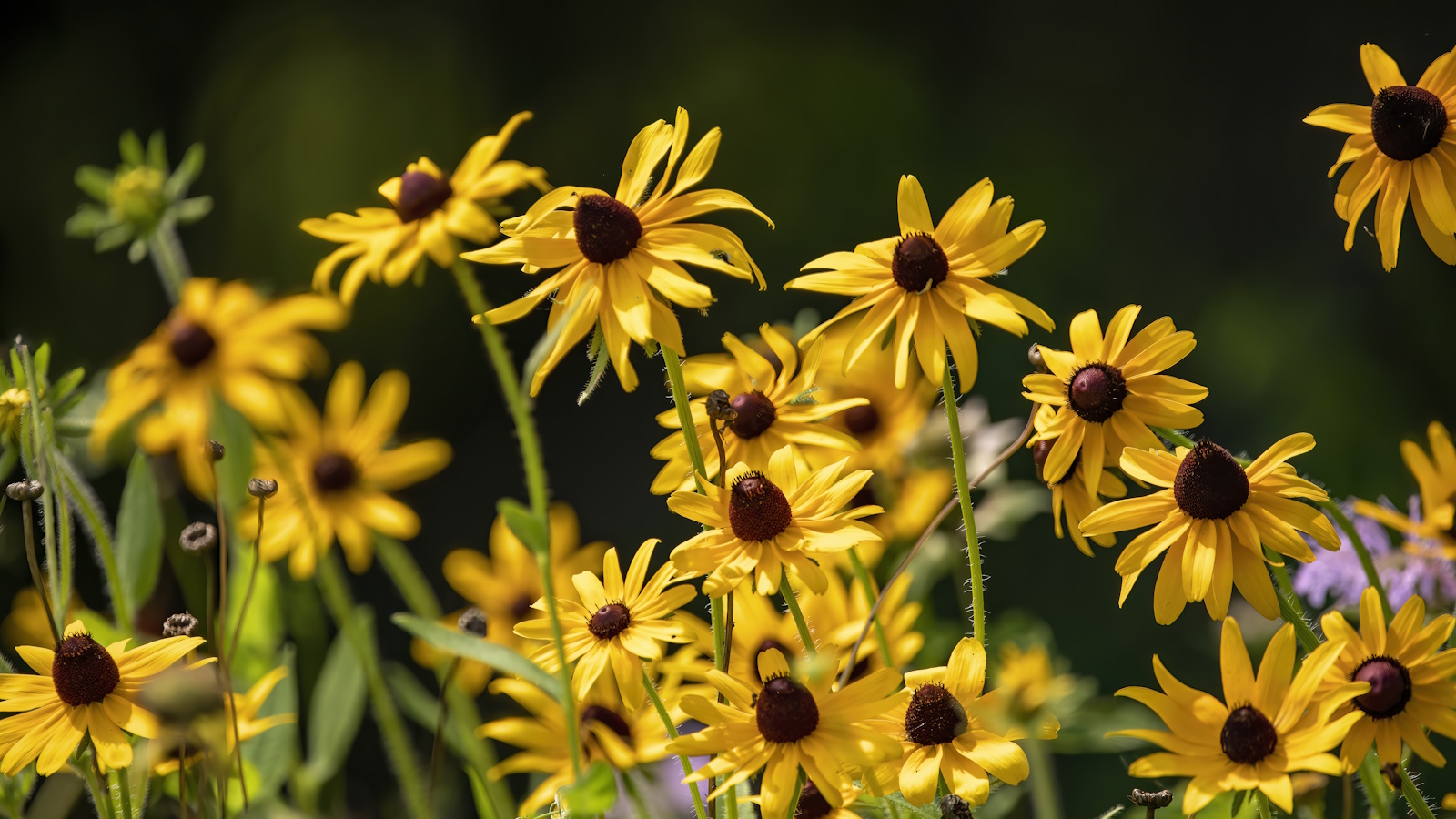
Rudbeckias, more often known as black-eyed Susans, also have daisy-like flowers, usually with black or almost black eyes and petals in the yellow to gold to orange color range – these are American native plants at their finest. Growing wild across the country from Maine to Florida to California, there are about 20 different species, including some of our most colorful garden flowers.
These US-native plants are as colorful as any plants from anywhere in the world. Rudbeckias are also easy to grow. They have simple needs – plenty of sunshine is key – and few need any special care. They also provide food for butterflies, bees and other pollinators. Although not 100% guaranteed to be deer resistant, deer usually pass them by on their way to finding something that doesn’t have bristly stems or leaves that taste unpleasant.
Featuring upright stems and mainly yellow or gold flowers, often with crimson or dark brown markings, many rudbeckias feature extra petals for bolder impact. Ranging in height from one to six feet, they fall into two groups. Here, we look at each of these groups and highlight 10 of our favorite varieties to consider planting in your yard.

The two types of rudbeckia
Annual rudbeckias, derived from Rudbeckia hirta, are grown from seed each year. They are available either as seeds, young plants or, sometimes, as plants in flower ready to spark up your yard.
In zone 8 they may survive the winter to flower for a second year, but are best treated as annuals and composted after flowering. These are some of the most colorful annuals we can grow - plant them in spring, enjoy them through the summer and fall, and then pull them up, shake off the dirt, and add them to your garden compost.
Perennial rudbeckias are tough. Derived from Rudbeckia fulgida, Rudbeckia laciniata and some others less often seen, they will survive almost any winter. Most are happy in gardens as cold as zone 3 and bring us many weeks of color in summer and early fall. They make tight clumps that slowly expand but are never a nuisance. Butterflies and moths appreciate the nectar provided by most varieties, so they are good for both color and wildlife.
Annual varieties
The following varieties are derived from Rudbeckia hirta, an upright annual or short-lived perennial plant that grows wild in almost every state.
They’re easy to grow in any sunny place in the yard and thrive in containers. The upright stems carry large daisies that look up colorfully and often combine two colors - gold and yellow, for example, or chestnut brown and gold.
1. ‘Cherokee Sunset’
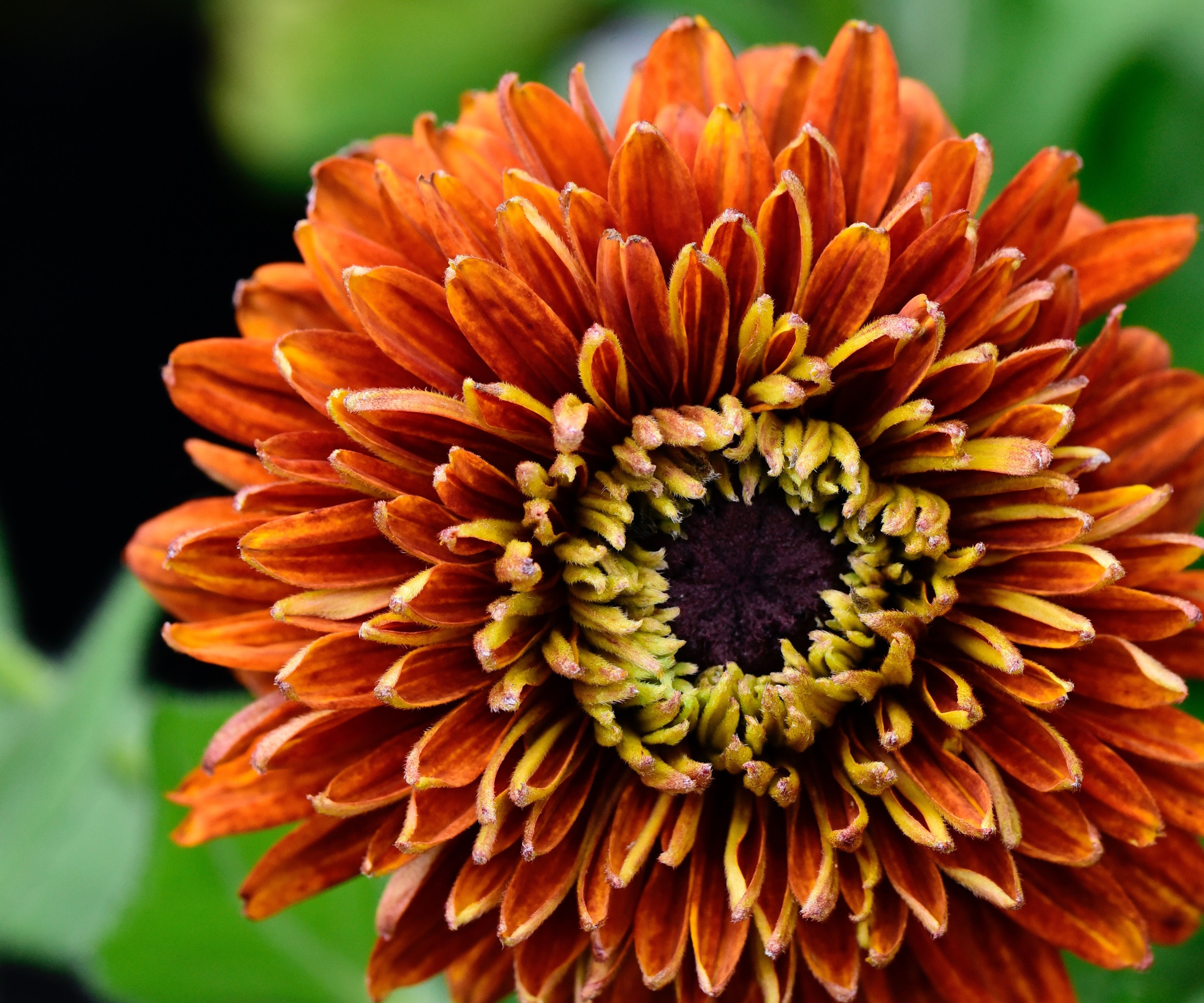
Double and semi-double, 3-4in flowers in a range of yellow, gold, coppery, orange, brown and bronzy-red shades often combining two or three colors in one flower. Opening through the summer and into fall, regular deadheading prolongs the display.
Type Annual, or short-lived perennial.
Good for Sunny borders, large containers and for cutting.
Deer resistant? Shows good, though not total, resistance.
Care Plant in late spring, in full sun, in fertile, well-drained soil. Deadhead regularly. Mulch in fall. Good in containers, keep moist and fertilize regularly.
Hardiness USDA Zone 8.
Height 24-28in.
You can buy Rudbeckia ‘Cherokee Sunset’ from Eden Brothers.
2. ‘Cherry Brandy’
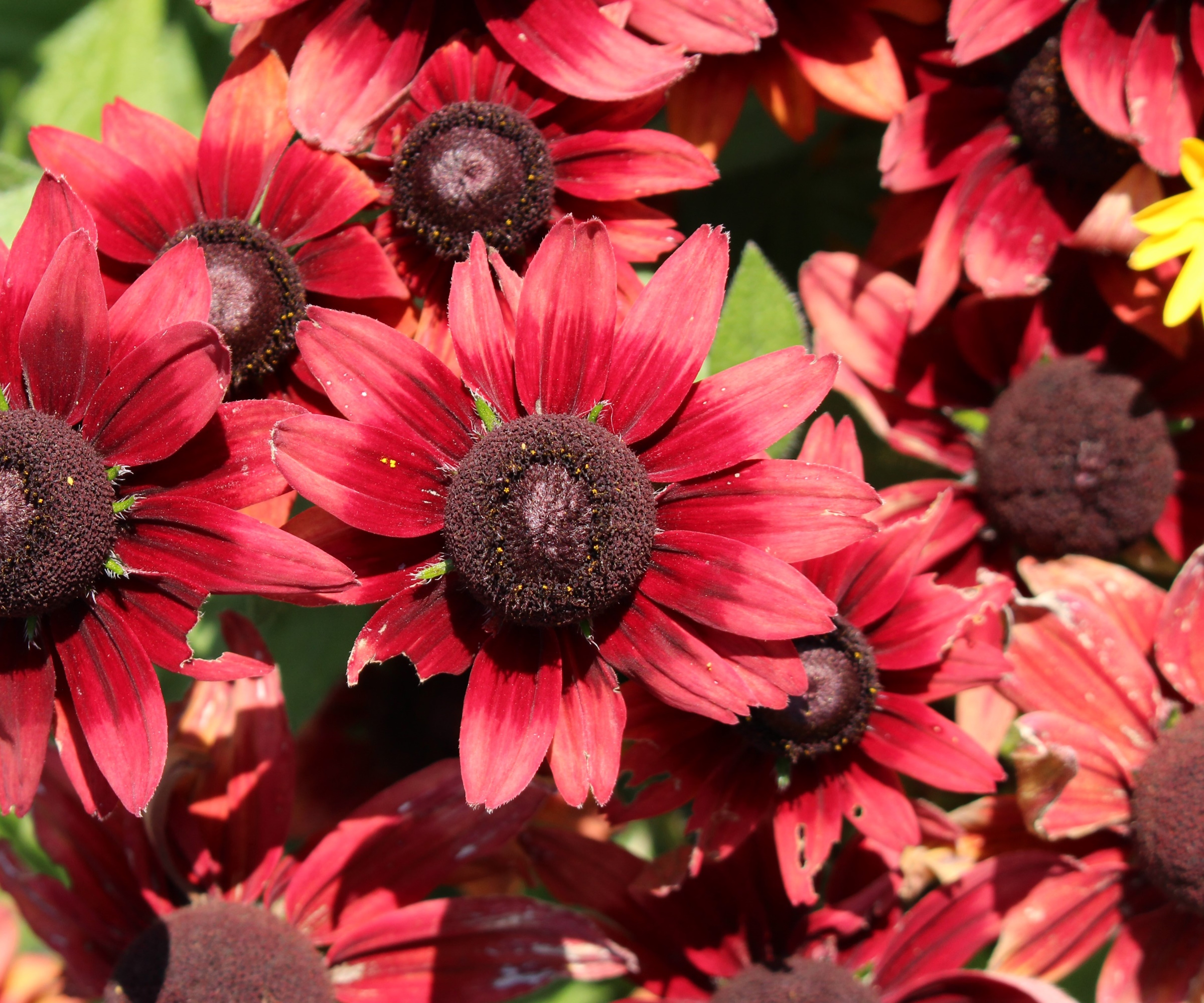
Unique in its cherry red petals that shade almost to the black at the base and surround a bold black eye, there’s nothing quite like this captivating coloring. Opening its 3-4in daisies in summer and fall, ‘Cherry Brandy’ gives a lift to any home-grown bouquet.
Type Annual, or short-lived perennial.
Good for Sunny borders, large containers, and cutting.
Deer resistant? Shows good, though not total, resistance.
Care Plant in late spring, in full sun, prefers fertile, well-drained soil. Deadhead regularly. Mulch in fall. Less likely to come back for a second year than other varieties – but worth it for one season of its special color.
Hardiness USDA Zone 8.
Height 18in-2ft.
You can find Rudbeckia ‘Cherry Brandy’ at Nature Hills.
3. ‘Denver Daisy’

Specially developed in honor of the City of Denver’s 150th anniversary, the petals of the ‘Denver Daisy’ are yellow at the tips shading more richly into gold and then mahogany red around the dark eye.
Type Annual, or short-lived perennial.
Good for Sunny borders with well-drained soil. Good for cutting.
Deer resistant? Shows good, though not total, resistance.
Care Sow seeds in spring. Plant in late spring, in full sun and fertile, well-drained soil. Deadhead regularly. Mulch in fall.
Hardiness USDA Zone 8.
Height 20-26in.
4. ‘Green Eyes’
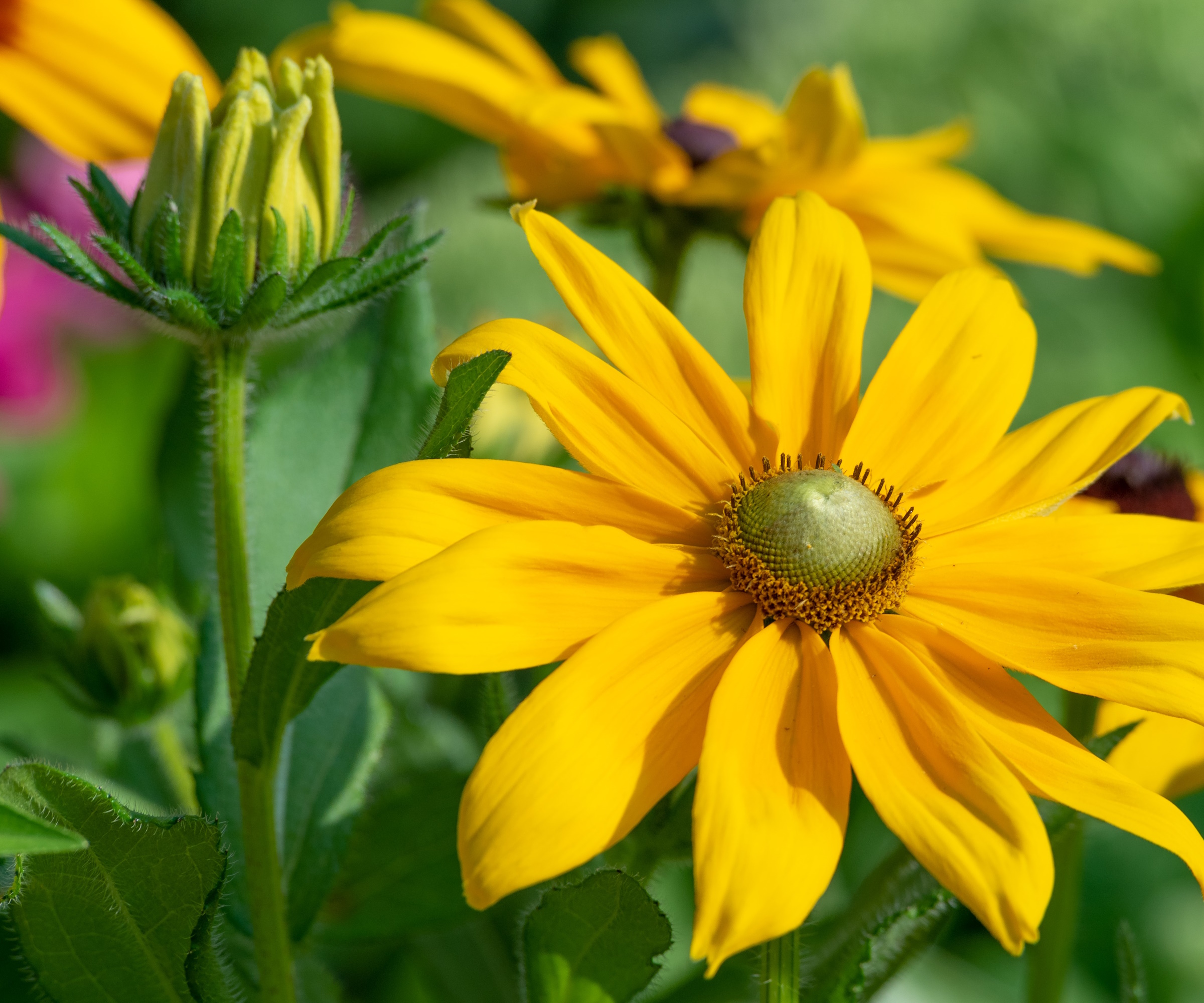
This outstanding black-eyed Susan has huge flowers with soft yellow petals that shade to golden orange at the base and all surrounding a green eye that matures to honeyed tones. It is an All America Selections award winner. ‘Green Eyes’ is almost identical.
Type Annual, or short-lived perennial.
Good for Sunny borders, large containers, cutting.
Deer resistant? Shows good, though not total, resistance.
Care Sow seeds in spring. Plant in late spring, in full sun, prefers fertile, well-drained soil. Deadhead regularly until late summer then allow seedheads to ripen for the birds.
Hardiness USDA Zone 8.
Height 2-3ft
You can buy Rudbeckia ‘Green Eyes’ from Eden Brothers.
5. Sunbeckia Series
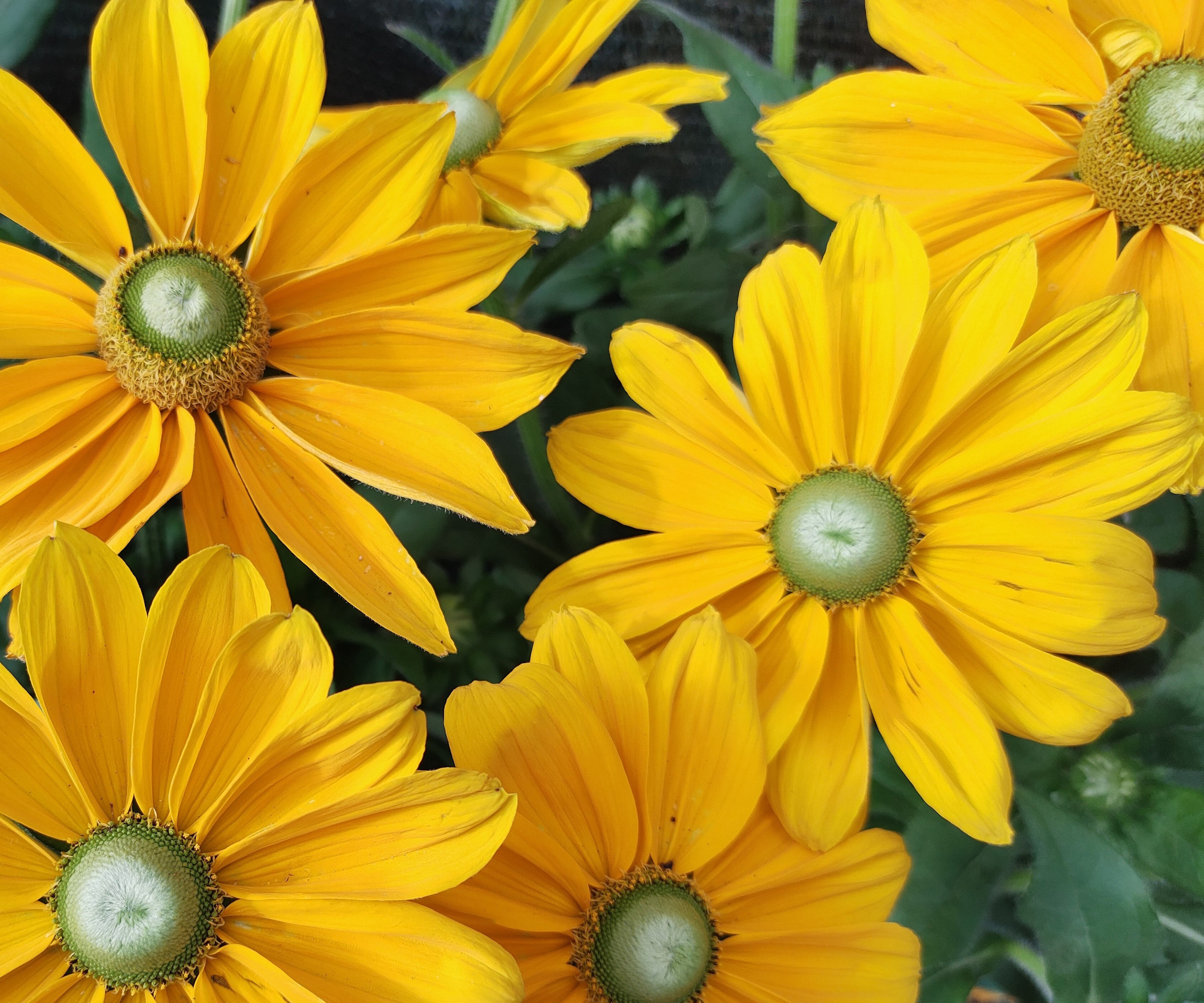
Strong, vigorous growth carries huge flowers in eight different colors and bi-colors. Boldly upright at first, spreading as it matures, plants in the Sunbeckia Series flower earlier and longer than most rudbeckias.
Type Annual, or short-lived perennial.
Good for Large containers, cutting, and impact in sunny borders.
Deer resistant? Shows some resistance.
Care Strong growing from the start and best fertilized regularly all season, deadheading is especially important to keep the plant looking its best. Buy as young plants, seeds not available.
Hardiness USDA Zone 8.
Height 16-18in. May need support.
6. Toto Series
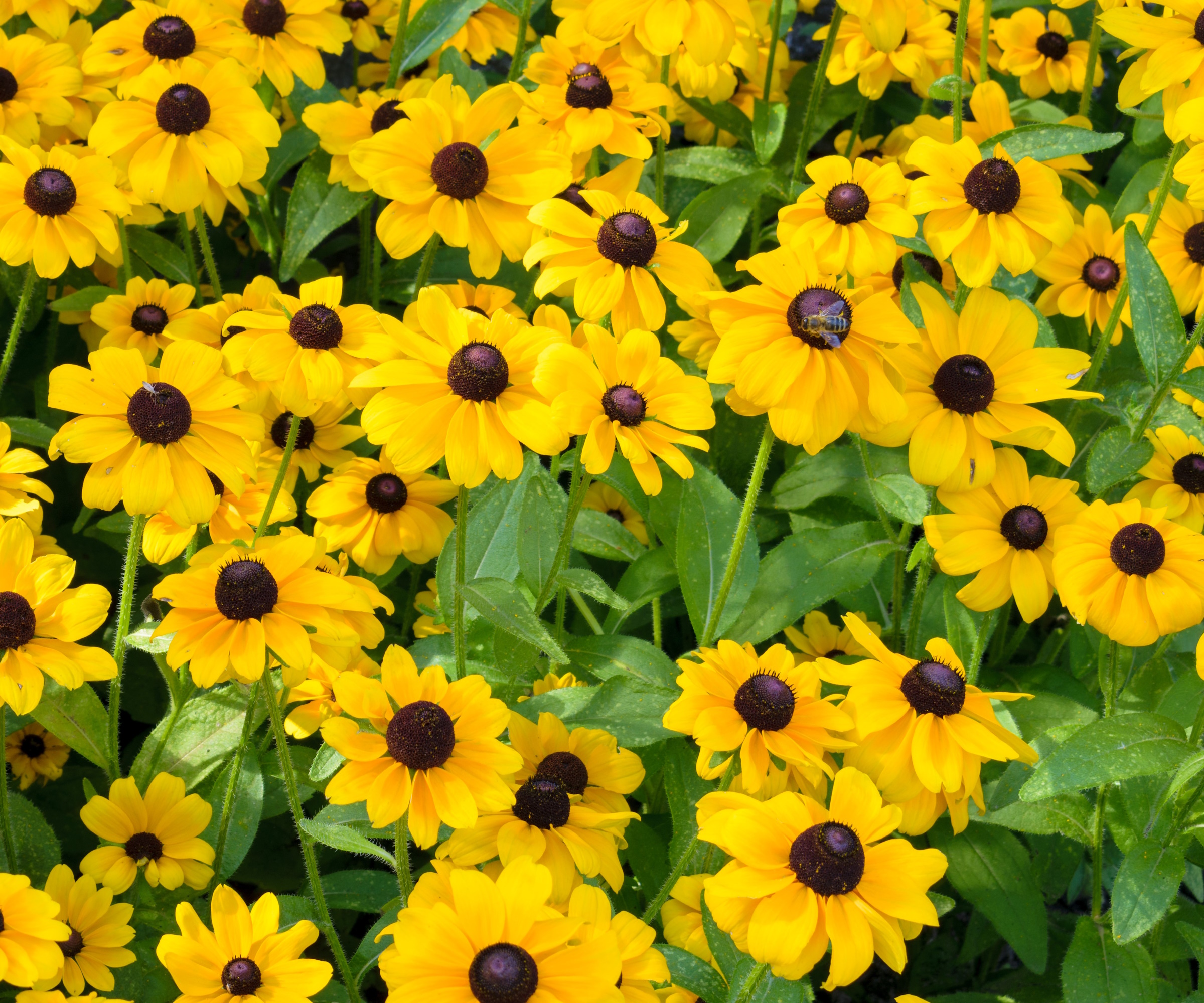
Neat growing, well-branched, dwarf plants with 2-3 inches flowers in lemon, gold or dark-eyed orange. The upward-facing flowers open steadily over a long period, especially if deadheaded regularly, and can almost completely hide the leaves.
Type Annual.
Good for Edging borders, as small potted specimens for the deck or around the edge of larger containers.
Deer resistant? Shows some resistance.
Care Usually available as seeds in a mix of the three colors. Start seeds in spring, and plant out after your last frost.
Hardiness USDA Zone 8.
Height 8-10in.
Perennial rudbeckias
Hardy perennial rudbeckias are derived from native species that grow right across our country. They show off their golden daisies through the summer on plants from 16in to 8ft in height so, with such a range of heights, it’s important to choose the right rudbeckia for the right place.
All are popular plants for pollinators and are among the most colorful and undemanding perennials we can grow.
7. ‘American Gold Rush’
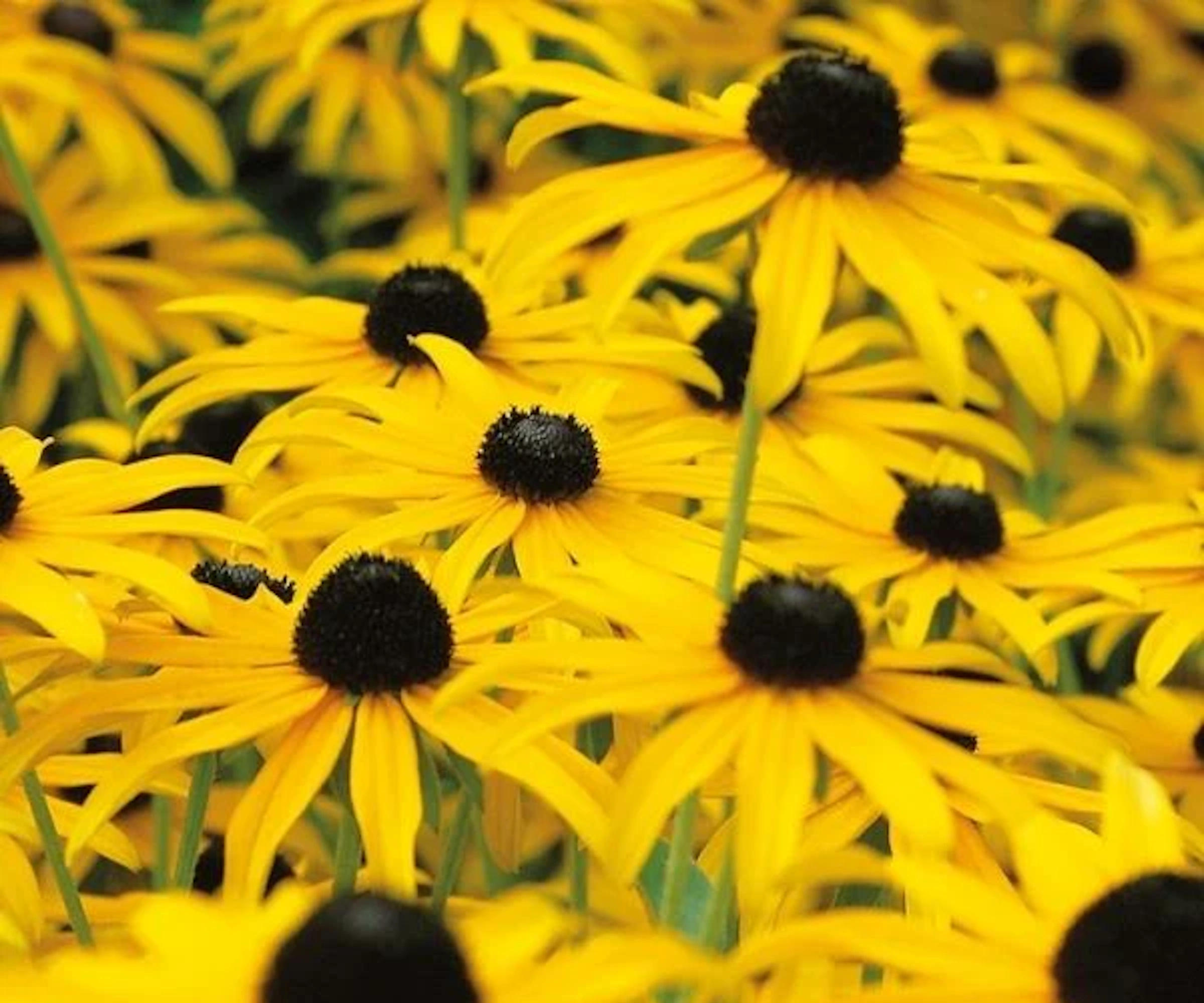
The first disease-resistant black-eyed Susan, making domed plants covered in dark-eyed golden daisies from mid-summer into fall. Shorter, and with slightly smaller flowers than many – but with that vital good health.
Type Hardy perennial.
Good for Sunny and well-drained sites. Drought resistant when established. Thrives in wetter conditions than most varieties.
Deer resistant? Shows some resistance.
Care Plant in fall or spring, may need support in milder climates, deadhead regularly, good for cutting
Hardiness USDA Zone 3.
Height 18-24in.
Buy Rudbeckia ‘American Gold Rush’ from Nature Hills.
8. ‘Goldquelle'
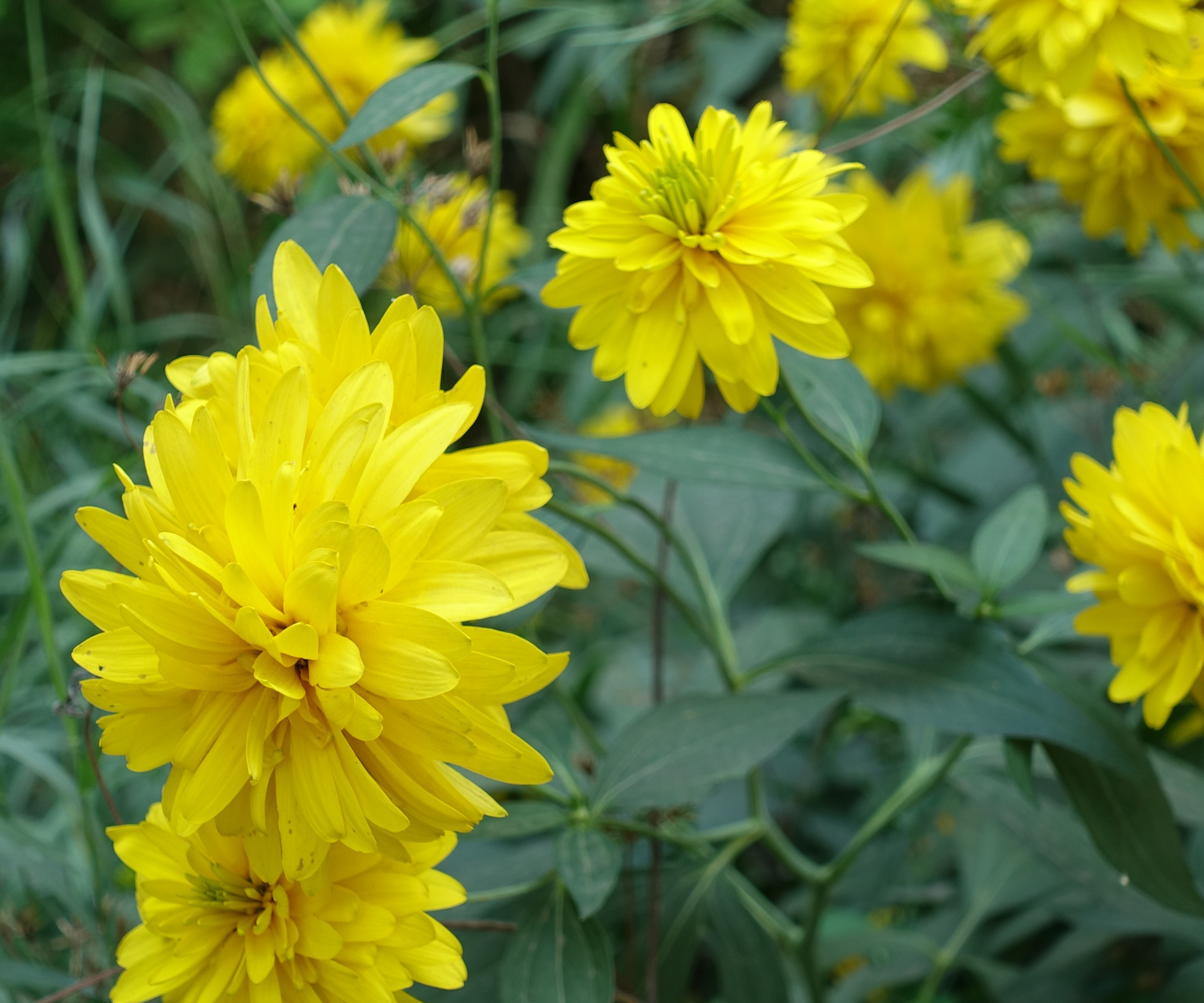
Fully double, bright yellow 3in flowers open from green buds from midsummer through fall, retaining their green centers as they open. The glossy, dark green, deeply divided leaves are less coarse than those of many rudbeckias.
Type Hardy perennial. Variety of Rudbeckia laciniata (cut-leaved coneflower).
Good for Impressive late color between shrubs at the middle or back of the border, and for dazzling bouquets. Popular with Monarchs and other butterflies.
Deer resistant? Shows some resistance.
Care Plant in spring, provide support by mid spring, allow seedheads to mature to feed birds then cut back to the ground in late fall.
Hardiness USDA Zone 3
Height 3-4ft, sometimes much taller
9. ‘Goldsturm’
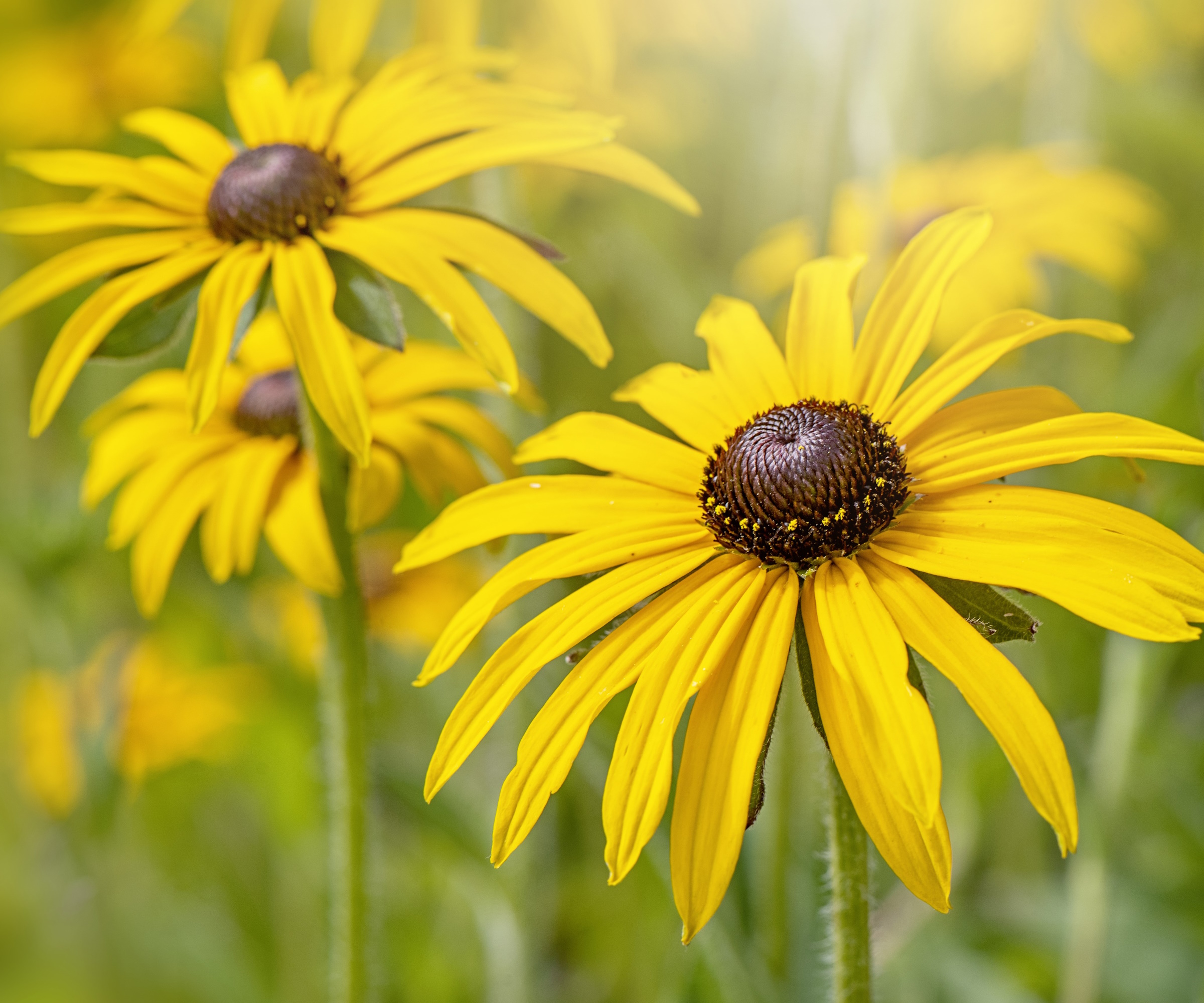
Tough, colorful and reliable, ‘Goldsturm’ has been one of our favorite hardy perennials for almost a hundred years. Deep yellow, almost orange, petals surround a purple-brown eye from many many weeks from mid-summer well into fall.
Type Hardy perennial. Variety of Rudbeckia fulgida.
Good for Fertile, well-drained borders in full sun, for native plant gardens and prairie-style borders. Makes a good cut flower.
Deer resistant? Shows some resistance.
Care Plant in fall or spring, provide support from late spring, especially in exposed places, deadhead regularly,
Hardiness USDA Zone 4.
Height 24-36in.
You can find Rudbeckia ‘Goldsturm’ at Burpee.
10. ‘Herbstonne’
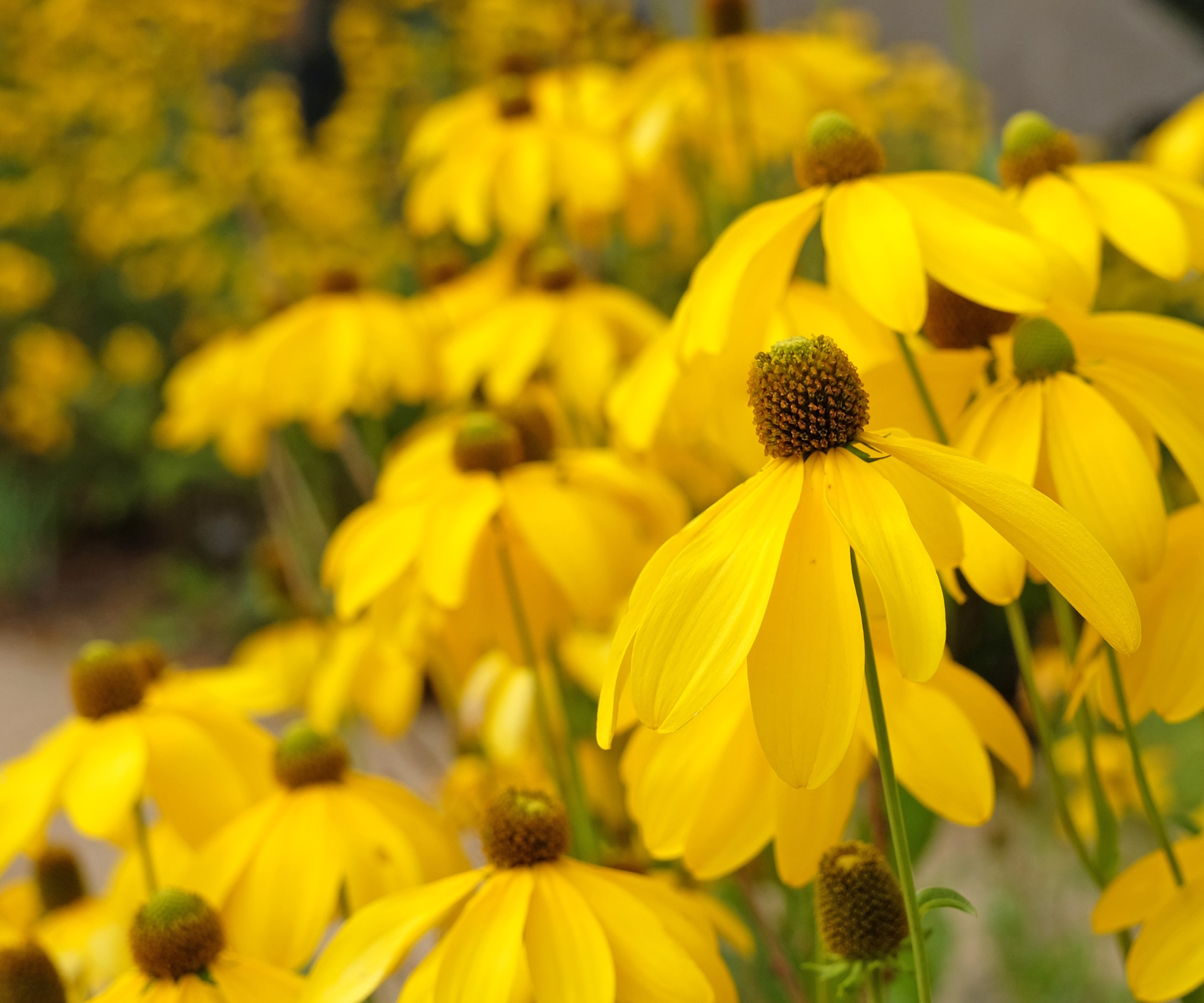
A very colorful, but natural looking variety, each large 4in flower has a green, pointed central cone surrounded by slightly swept back golden petals. This colorful fall specialty is good for late pollinators and valuable for large bouquets.
Type Hardy perennial. Variety of Rudbeckia laciniata (cut-leaved coneflower).
Good for The back of a sunny border, between shrubs, and for cutting.
Deer resistant? Shows some resistance.
Care Plant in spring, prefers damp conditions and shelter from winds but still usually needs good support from late spring – always stake before any stems are blown over. Can be cut back by half or two thirds to reduce flowering height, but delay blooming. Avoid deadheading as birds feed on the seeds.
Hardiness USDA Zone 3.
Height 4-6ft.
Buy Rudbeckia laciniata ‘Herbstonne’ from Nature Hills.
Rudbeckias are also often referred to as a coneflower. Another popular coneflower is echinacea. These are hardy perennial plants with daisy-like flowers in purple, red, pink, orange, white and sometimes yellow – each with a central cone, usually colored honey-brown.







